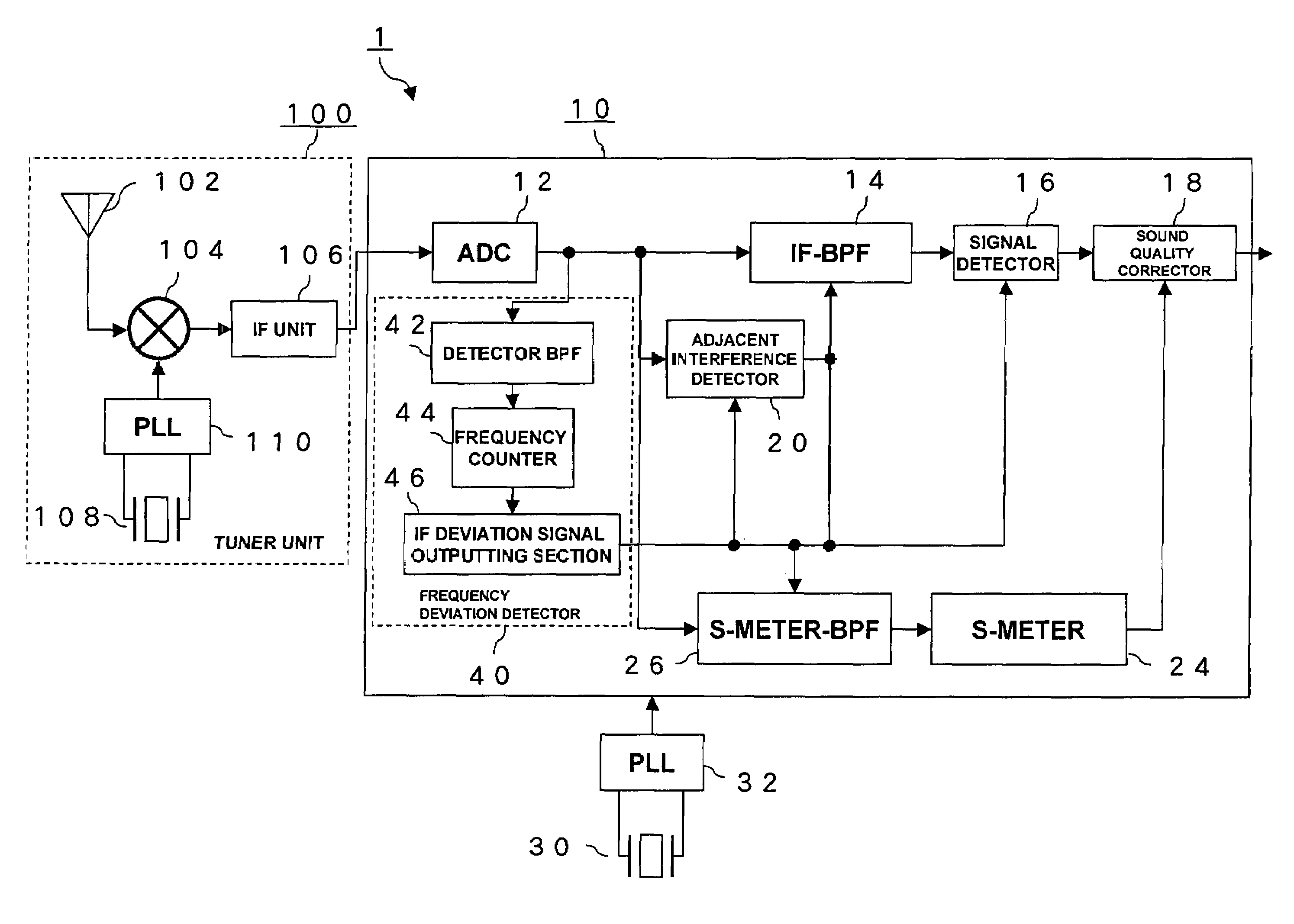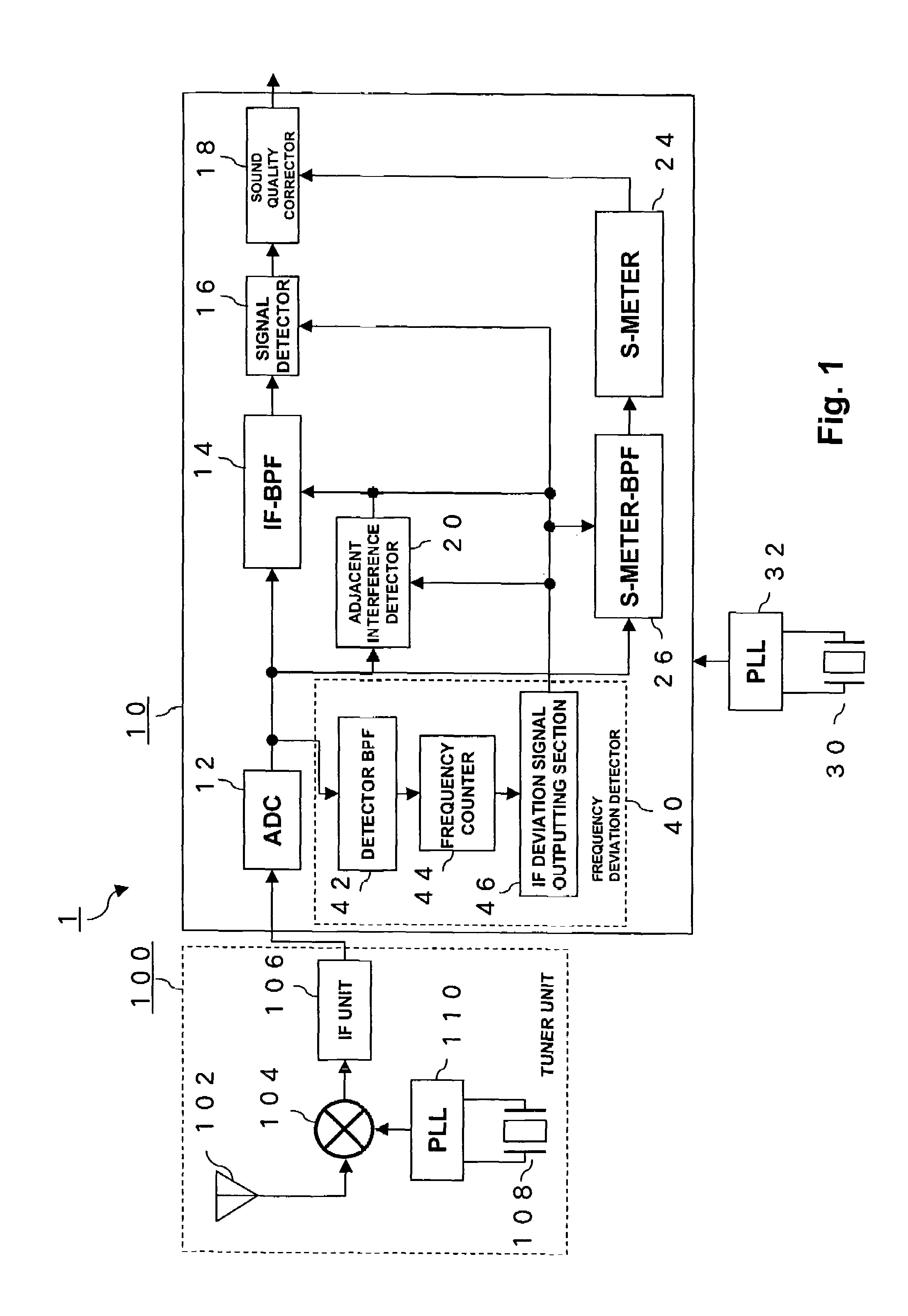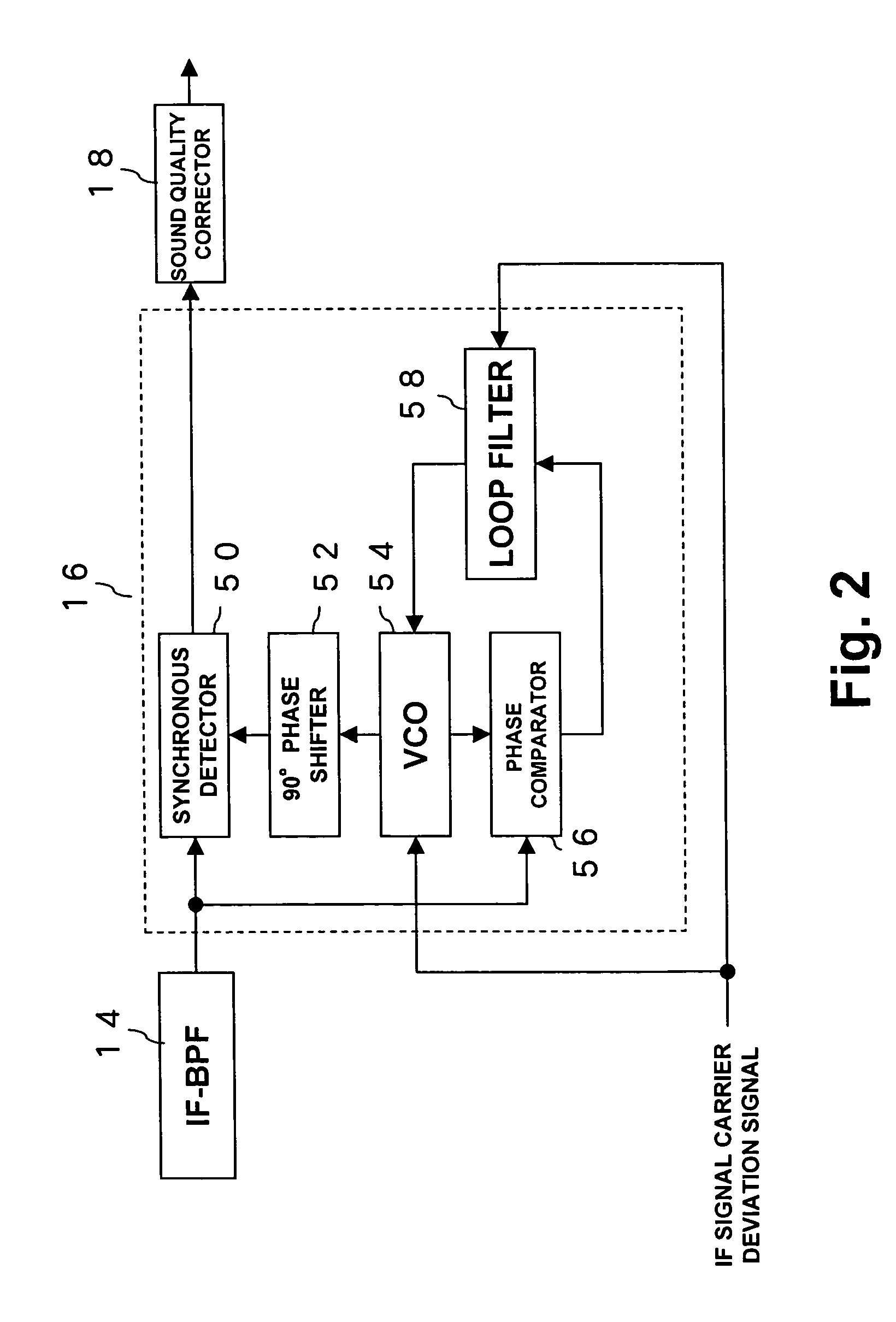Signal processing circuit for tuner which applies signal processing based on variation in frequency of intermediate frequency signal
a signal processing circuit and intermediate frequency signal technology, applied in the direction of signal processing circuits, brightness and chrominance, electrial characteristics varying frequency control, etc., can solve the problems of increasing the cost, increasing the degradation of the sn ratio and affecting the accuracy of adjacent interference detection, so as to inhibit the degradation of the sound quality of the demodulated signal
- Summary
- Abstract
- Description
- Claims
- Application Information
AI Technical Summary
Benefits of technology
Problems solved by technology
Method used
Image
Examples
Embodiment Construction
[0021]A preferred embodiment of the present invention will now be described referring to the drawings.
[0022]FIG. 1 is a diagram showing a structure of an AM receiver circuit 1 including a signal processing circuit for a tuner according to a preferred embodiment of the present invention.
[0023]An AM receiver circuit 1 can be primarily separated into two sections including a tuner unit 100 for receiving a broadcasting radio wave and outputting an intermediate frequency (IF) signal, and a tuner digital signal processor (DSP) 10 which is a signal processing circuit for a tuner which receives the IF signal.
[0024]The tuner unit 100 comprises an antenna 102 for receiving broadcast radio waves, a mixer 104 for converting a broadcast signal of a desired station into an intermediate frequency (IF) signal having a carrier frequency of 450 kHz, and an IF unit 106 for amplifying an IF signal output from the mixer 104. A local oscillator signal from a local oscillator which allows tuning to an osc...
PUM
 Login to View More
Login to View More Abstract
Description
Claims
Application Information
 Login to View More
Login to View More - R&D
- Intellectual Property
- Life Sciences
- Materials
- Tech Scout
- Unparalleled Data Quality
- Higher Quality Content
- 60% Fewer Hallucinations
Browse by: Latest US Patents, China's latest patents, Technical Efficacy Thesaurus, Application Domain, Technology Topic, Popular Technical Reports.
© 2025 PatSnap. All rights reserved.Legal|Privacy policy|Modern Slavery Act Transparency Statement|Sitemap|About US| Contact US: help@patsnap.com



